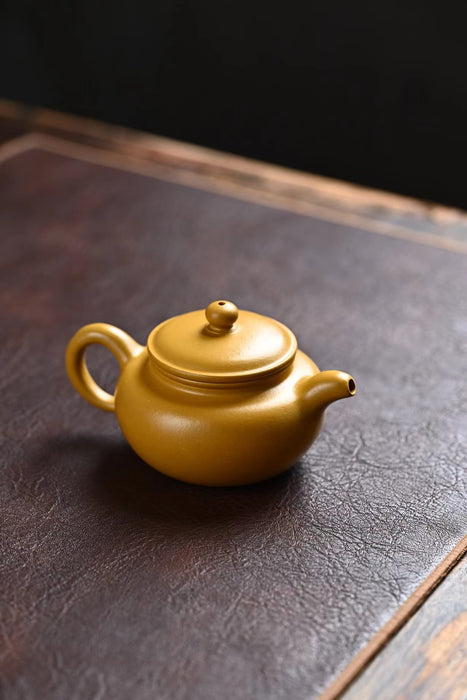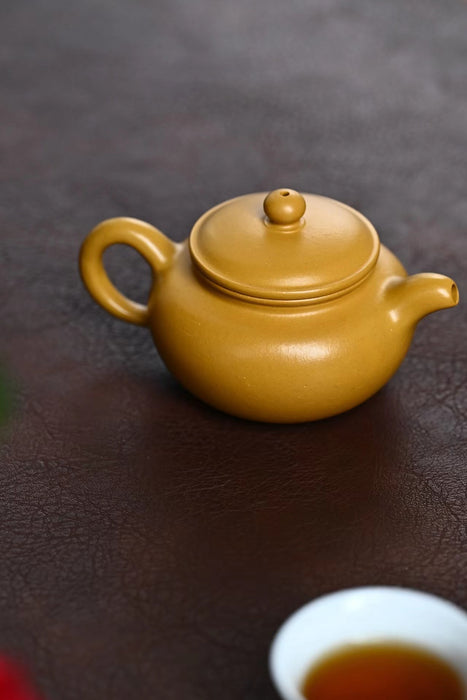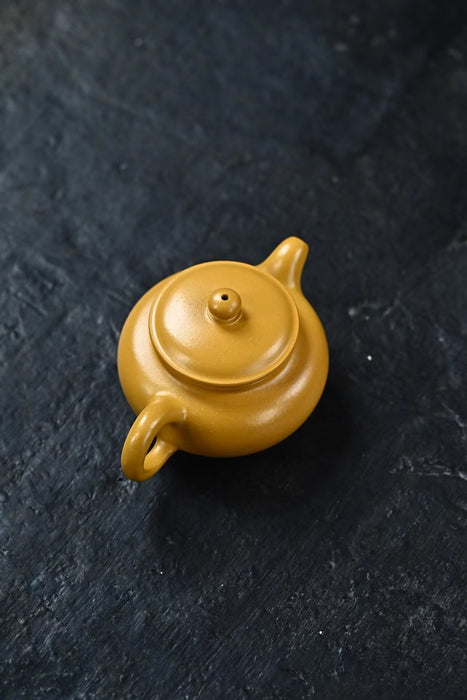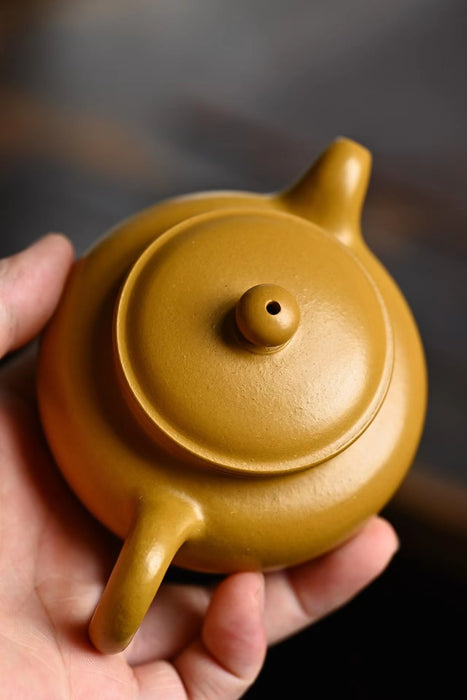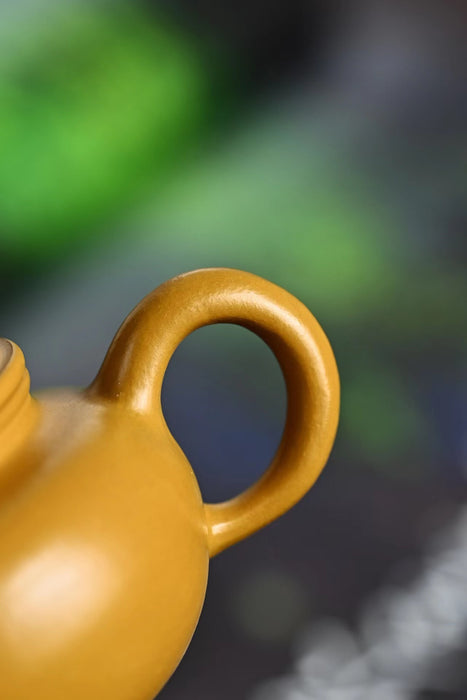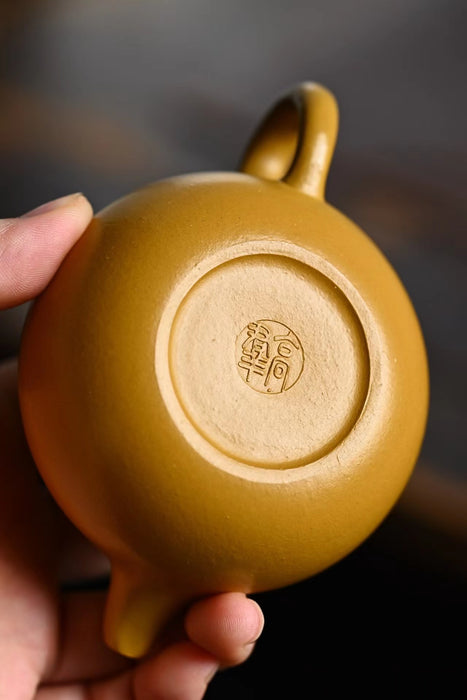
Golden Duan Ni Clay "Fang Gu" Yixing teapot
So what is Duan Ni? In written Chinese, there are two letters for it. The first character is "緞", which means silk. It has a very similar pronunciation with "團" (Tuan) at Yi Xing, so this name probably came from literai at the time who thought "silk" would sound more elegant.
The second character is "團", which means "mass". This name basically describes the geological character of it, indicating it is a "mass of different ores." These different ores could be "Zi Ni" and "Green Mud," or "Zhu Ni" and "Green Mud" (which very rarely happen). You might notice already, "Green Mud" plays a very important role in Duan Ni. The composition of Duan Ni must have Green Mud in it, and must contain more than the other ores such as Zi Sha or Zhu Ni to classified as "Duan Ni". Duan Ni is a type of sedimentary rock that's a combination of Argillaceous Siltstone and Silty Mudstone. This gives Duan Ni an almost a clay-like texture on the surface when contact with skin, unlike Zi Sha's rocky/hard feeling, but still relatively more robust when compared to Zhu Ni.
Mining area: western Fudong township of Yixing city
Kiln temperature: approx. 1040 C.
Contraction: approx. 45%-55%.
Appropriate for brewing: fresh Oolong teas (light roasted types) are extremely well-suited, Tie Guan Yin (medium roasted or highly roasted types), various kinds of Pu-erh.
[Artist Name] Gao Qun
[Product Name] Fang Gu Teapot
[Capacity] 110ml (+/-10ml)
[Filter Type] multi-hole filter (not ball)
[Description] Handmade and kiln roasted at the perfect temperature. It has a fine gloss and a delightful delicate color. Breathes well and is easy to cultivate through brewing tea. It will only increase in beauty as it ages. This teapot has a dignified and traditional shape. Its handle and spout are well-proportioned. This is a product of exquisite craft – simple and refined. It has a tight-fitting lid and a smooth flow of liquid. Practical and useful, this is a product of the highest value.
Every pot is hand-made and the artisan will sometimes change the stamps they use. There may also be some slight differences in the color, handle shape, and volume. It's not possible for us to re-take the pictures for each new batch of teapots that we receive from this artisan. Some differences in the color and shininess of the actual teapot you receive as compared to the one in the photographs may also be due to light conditions when the photographs are taken. Thanks for your understanding!


